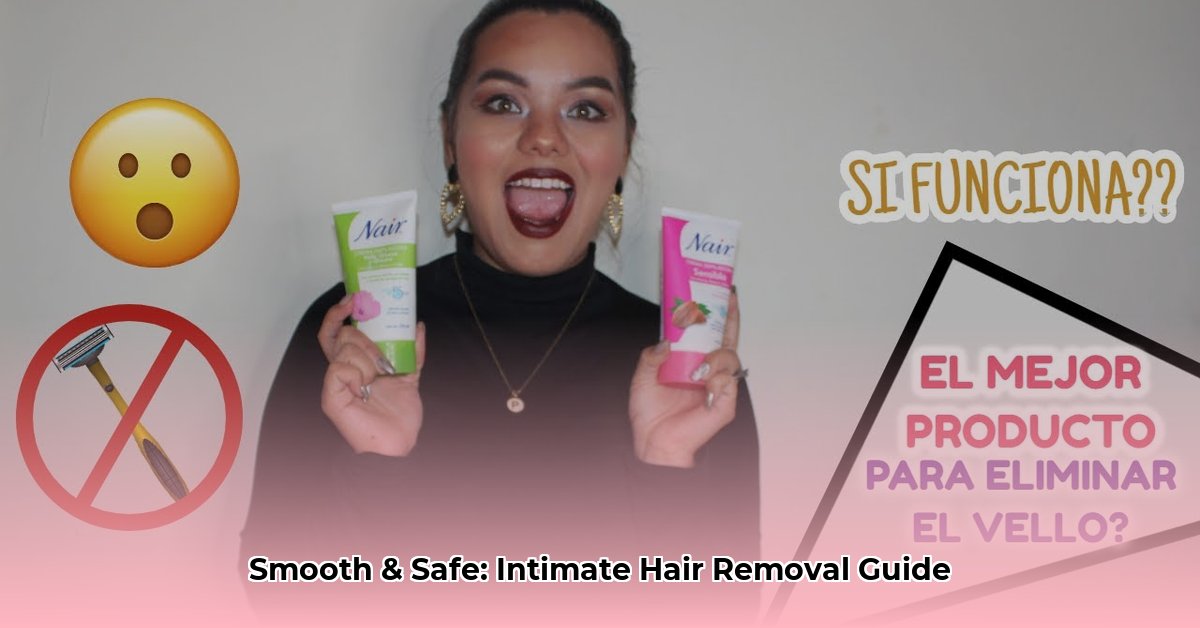Choosing the Right Cream
Selecting the right intimate hair removal cream is crucial for a comfortable and irritation-free experience. Because the pubic area is sensitive, prioritize creams specifically formulated for this delicate skin. Look for products labeled “sensitive skin,” “hypoallergenic,” or “for intimate use.” Ingredients like aloe vera, chamomile, shea butter, and vitamin E can soothe and hydrate. Avoid heavily fragranced products, as these may irritate.
Preparing for Hair Removal
Before applying the cream, gently cleanse the area with lukewarm water and a mild, unscented soap. Ensure the skin is completely dry, as moisture can dilute the cream and reduce its effectiveness. If your pubic hair is longer than ¼ inch, trimming it beforehand can improve the cream’s performance. For optimal results and to minimize potential complications, consider these factors:
- Hair type: Coarser hair may require a stronger formula.
- Skin sensitivity: If you have very sensitive skin, opt for creams with extra soothing ingredients.
- Ingredients: Familiarize yourself with the ingredients and avoid any known allergens.
Performing a Patch Test
A patch test is essential before using any new hair removal cream, especially in the intimate area. Apply a small amount of cream to a less sensitive area, such as your inner thigh. Wait 24 hours and observe for any signs of irritation like redness, itching, or burning. If any reaction occurs, do not use the cream in your intimate area.
Applying the Cream
Using the provided spatula or applicator (never your fingers!), apply a thin, even layer of cream to cover the hair you wish to remove. Avoid applying a thick layer, as this won’t necessarily speed up the process and may increase irritation. Strictly adhere to the product’s instructions regarding application time. Leaving the cream on longer than recommended significantly increases the risk of chemical burns.
Removing the Cream and Hair
Once the recommended time has elapsed, use the spatula or a soft cloth to gently remove the cream and dissolved hair. Wipe in the direction of hair growth to minimize ingrown hairs. Thoroughly rinse the area with lukewarm water to remove all traces of the cream. Gently pat the skin dry with a clean towel; avoid rubbing, as this can irritate.
Post-Removal Care
After hair removal, treat your skin gently. Apply a fragrance-free, hypoallergenic moisturizer to soothe and hydrate. Aloe vera gel or a gentle balm can be particularly calming. Avoid tight-fitting clothing, hot baths, saunas, or activities that may cause friction for at least 24 hours. A few days later, you can gently exfoliate to help prevent ingrown hairs. Some research suggests that applying a cool compress can help reduce inflammation.
Potential Side Effects and Precautions
While generally safe, some individuals may experience mild irritation like redness or itching. If you experience burning, blistering, or signs of an allergic reaction, immediately rinse the area with cool water and consult a dermatologist. Aftercare practices can also influence the likelihood of experiencing some side effects. Ongoing research is exploring the long-term effects of repeated chemical hair removal.
Alternative Hair Removal Methods
If hair removal creams aren’t suitable for you, several alternatives exist:
- Waxing and Sugaring: These methods provide longer-lasting results but can be painful. Sugaring is often considered slightly less painful than waxing.
- Laser Hair Removal: A more permanent solution, although it requires multiple sessions and can be expensive.
- Shaving: Quick and easy, but may lead to ingrown hairs or razor burn.
- Electrolysis: Another permanent hair removal method that involves inserting a fine needle into each hair follicle.
Choosing the Best Method for You
The ideal hair removal method depends on individual preferences, pain tolerance, budget, and desired results. Consider the following table for a comparison:
| Method | Duration | Pain Level | Cost | Convenience | Sensitive Skin |
|---|---|---|---|---|---|
| Creams | Short-term | Low | Low | High | Use caution |
| Waxing/Sugaring | Longer-term | Moderate | Moderate | Moderate | Can be irritating |
| Laser | Permanent | Mild | High | Low | Consult doctor |
| Shaving | Short-term | Very Low | Low | High | Can be irritating |
| Electrolysis | Permanent | Moderate | High | Low | Generally safe |
This guide provides general information. Consult a dermatologist or other healthcare professional for personalized advice.
- Adult Bento Box Lunch Ideas For Quick Healthy Portable Options - December 25, 2025
- Adult Bento Meal Ideas for Delicious, Easy, and Healthy Lunches - December 24, 2025
- Adult Bento Box Ideas for Delicious and Easy Lunches - December 23, 2025










